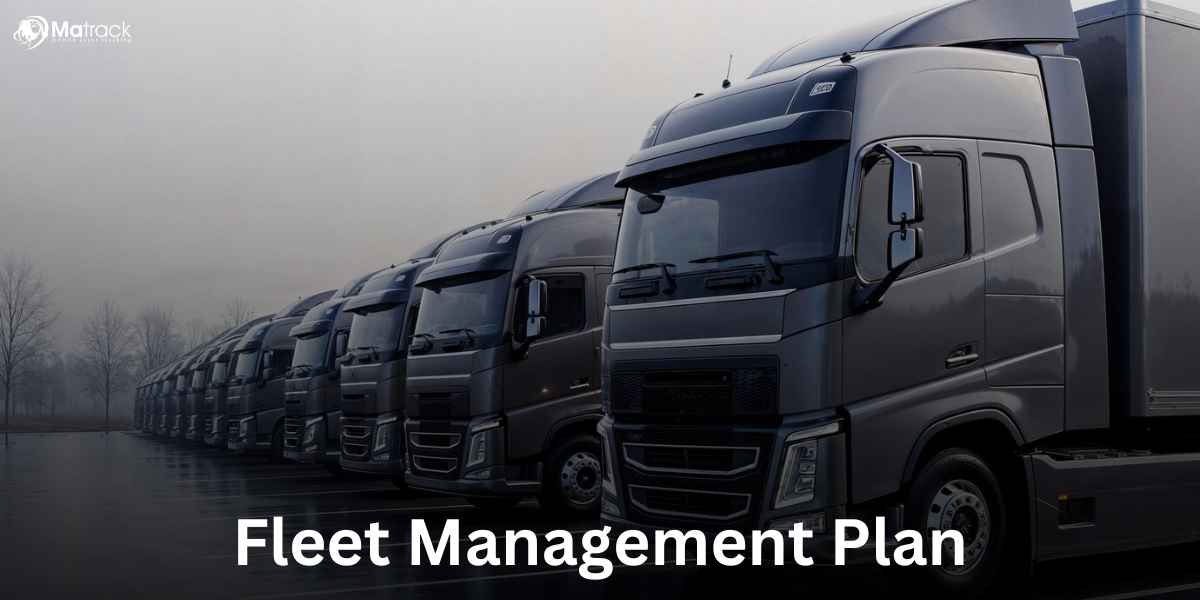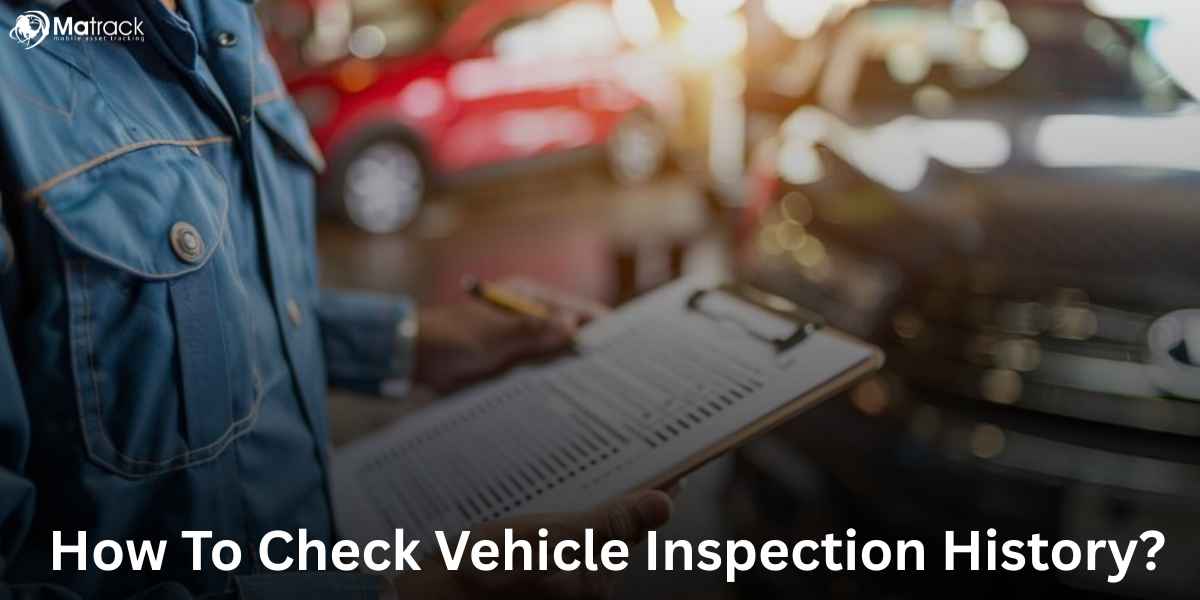Key Takeaways:
- Fleet risk management helps reduce accidents, cut costs, and ensure compliance through structured control over drivers and vehicles.
- Common risks include unsafe driving, poor maintenance, scheduling issues, environmental hazards, and legal violations.
- Proven strategies like GPS tracking, ELD devices, driver training, and dashcams actively reduce fleet-related incidents.
- Matrack supports risk reduction with real-time tracking, automated compliance tools, and driver behavior monitoring.
What Is Fleet Risk Management?
Fleet risk management controls risks tied to company vehicles. The goal is to prevent accidents, cut costs, and meet legal requirements.
Companies manage this by monitoring drivers, maintaining vehicles, and using GPS tools. These steps improve safety and keep operations steady.
What Are Some Common Fleet Risks?
Driver-Related Risks
- Distracted driving (texting, fatigue, eating)
- Speeding and reckless behavior
- Substance abuse
- Poor health or vision
Vehicle-Related Risks
- Inadequate maintenance
- Mechanical failure (brakes, tires, engine)
- Aging vehicle fleet
- Improper loading
Operational Risks
- Scheduling conflicts
- Overworked drivers
- Delayed deliveries
- Route inefficiencies
Environmental Risks
- Adverse conditions
- Urban congestion
- Road hazards
- Wildlife crossings
Regulatory Risks
- DOT audits
- Logbook falsification
- Emissions violations
- Non-compliance with hours-of-service
Why Fleet Risk Management Is Important?
Fleet risk management directly improves safety, reduces fuel costs, and ensures compliance. It protects both people and business operations from preventable harm.
Accident Reduction
Structured safety programs lead to fewer road incidents. Driver training, monitoring, and real-time alerts help prevent high-risk situations before they escalate.
Insurance Cost Control
Fleets with strong risk oversight pay less for coverage. Detailed risk data supports favorable policy terms and faster claims resolution.
Regulatory Compliance
Fleet policies aligned with transport laws prevent fines and shutdowns. Keeping up with FMCSA, DOT, and OSHA standards avoids legal exposure.
Brand Protection
Safe, responsible fleets protect the company’s public image. Fewer incidents mean higher trust from clients and communities.
Financial Impact
Fleet accidents create serious financial losses. Costs per incident can range from $16,000 for minor damage to $75,000 or more for serious collisions.
Fleet Risk Management Strategies
Effective fleet risk management depends on clear strategies that target specific problem areas. These eight approaches reduce liability and improve how the fleet performs every day.
Driver Screening and Hiring
Use background checks, license verification, and driving record reviews before onboarding. Hire only drivers with clean MVRs and no DUIs in the last five years to minimize safety risks. Also see: PSP Report
Ongoing Driver Training
Implement defensive driving, accident response, and fatigue management courses for every driver. Use simulation tools and real-case reviews to reinforce practical skills and judgment.
GPS Tracking
Install systems to track location, idle time, and unauthorized use of vehicles. Flag risky behavior in real-time and intervene before it leads to incidents.
Vehicle Inspection and Maintenance
Enforce routine inspection logs and daily pre-trip checks. Schedule monthly preventive maintenance focused on brakes, oil, tires, and emissions systems to avoid costly breakdowns.
Dashcams and Video Analytics
Install AI dashcams to capture both in-cabin and road-facing footage. Use video analytics to coach drivers on risky habits and investigate accidents with clear visual evidence.
Driver Scorecards
Quantify driver behavior with a scoring model based on telematics data. Reward consistently safe drivers and provide targeted retraining for those showing high-risk patterns.
Incident Reporting Protocols
Create a standard post-incident checklist to streamline responses. Include steps for photo capture, medical support, and immediate reporting to supervisors or fleet managers.
Insurance Optimization
Work with fleet insurance specialists to review current policies. Opt for high-deductible, usage-based, or retention-layer insurance policies to reduce premiums and align with risk levels.
Technology in Fleet Risk Management
Modern fleet risk management relies heavily on technology to improve safety, efficiency, and control. Tools like telematics, AI analytics, and integrated platforms give real-time insights that help reduce risks and support smarter decisions.
Telematics Systems
Telematics systems connect each vehicle to a central dashboard. They provide real-time data on location, speed, hard braking, engine status, and alerts, giving fleet managers full visibility into daily operations.
Driver Behavior Analytics
AI-powered analytics review driving patterns to detect risky habits like speeding, harsh braking, or distraction. These insights help correct behavior early and improve driver safety over time.
Maintenance Automation
Predictive analytics use vehicle data to forecast mechanical issues before they happen. This allows fleets to schedule service proactively and avoid unexpected breakdowns.
Fleet Management Platforms
Comprehensive platforms combine dispatch, route planning, compliance checks, and reporting into a single system. This level of integration streamlines workflows and improves response times across the entire fleet.
Compliance and Legal Considerations
Non-compliance leads to hefty penalties and shutdowns. Managing legal risk is non-negotiable.
- DOT Compliance: Maintain driver qualification files, drug testing logs, and vehicle records.
- Hours-of-Service (HOS) Logs: Use ELD devices and audit logs weekly.
- Accident Documentation: Store accident reports, video footage, and witness statements for all incidents.
- License and Certification Monitoring: Check CDL validity, medical certificates, and endorsements quarterly.
How to Implement a Fleet Risk Management Program?
Implementing a fleet risk management program means turning strategy into action. This process requires structure, leadership, and accountability at every step.
Step 1: Assess Existing Risk Levels
Review past incident records, insurance claims, and compliance audits. Identify the most frequent causes of risk and where preventive actions are currently missing.
Step 2: Set Clear Risk Thresholds
Define what levels of risk are acceptable based on your company’s safety goals and business model. Use this threshold to guide enforcement and escalation protocols.
Step 3: Build Operational Policies
Create specific, written rules for every risk point, driver conduct, vehicle handling, and emergency response. Make policies easy to follow and tied to measurable behaviors.
Step 4: Roll Out Tools and Systems
Deploy tracking, monitoring, and maintenance tools in phases. Focus on proper setup, staff onboarding, and verifying that each tool fits real-world operations.
Step 5: Train, Align, and Communicate
Train drivers and managers not just on compliance, but on the reasoning behind each policy. Align everyone with shared safety goals through meetings, updates, and feedback sessions.
Step 6: Track Metrics and Adjust
Set up dashboards to monitor key indicators like incident frequency, driver scoring trends, and policy violations. Adjust tactics monthly based on what the data shows.
Measuring Fleet Risk Performance
Monitor these five KPIs to track success:
- Accident Rate: Incidents per 100,000 miles
- Insurance Claim Frequency: Claims per month
- Driver Score Improvement: Behavioral changes over time
- Vehicle Uptime: % days each unit is operational
- Maintenance Cost per Mile: Dollars spent per fleet mile
How Matrack Helps You In Efficient Fleet Risk Management?
Matrack’s GPS fleet tracking helps you monitor vehicle movement and driver behavior in real time. Quick access to speed and route data makes it easier to step in before small issues turn into bigger risks.
Using Matrack’s ELD, driving hours are logged automatically and alerts are sent before limits are reached. This reduces fatigue-related incidents and supports legal compliance without manual effort.
Fleet dash cam footage captures both road and in-cabin activity, making unsafe actions like distraction or harsh braking easy to catch. Having clear video evidence helps resolve incidents and improve driver coaching.



